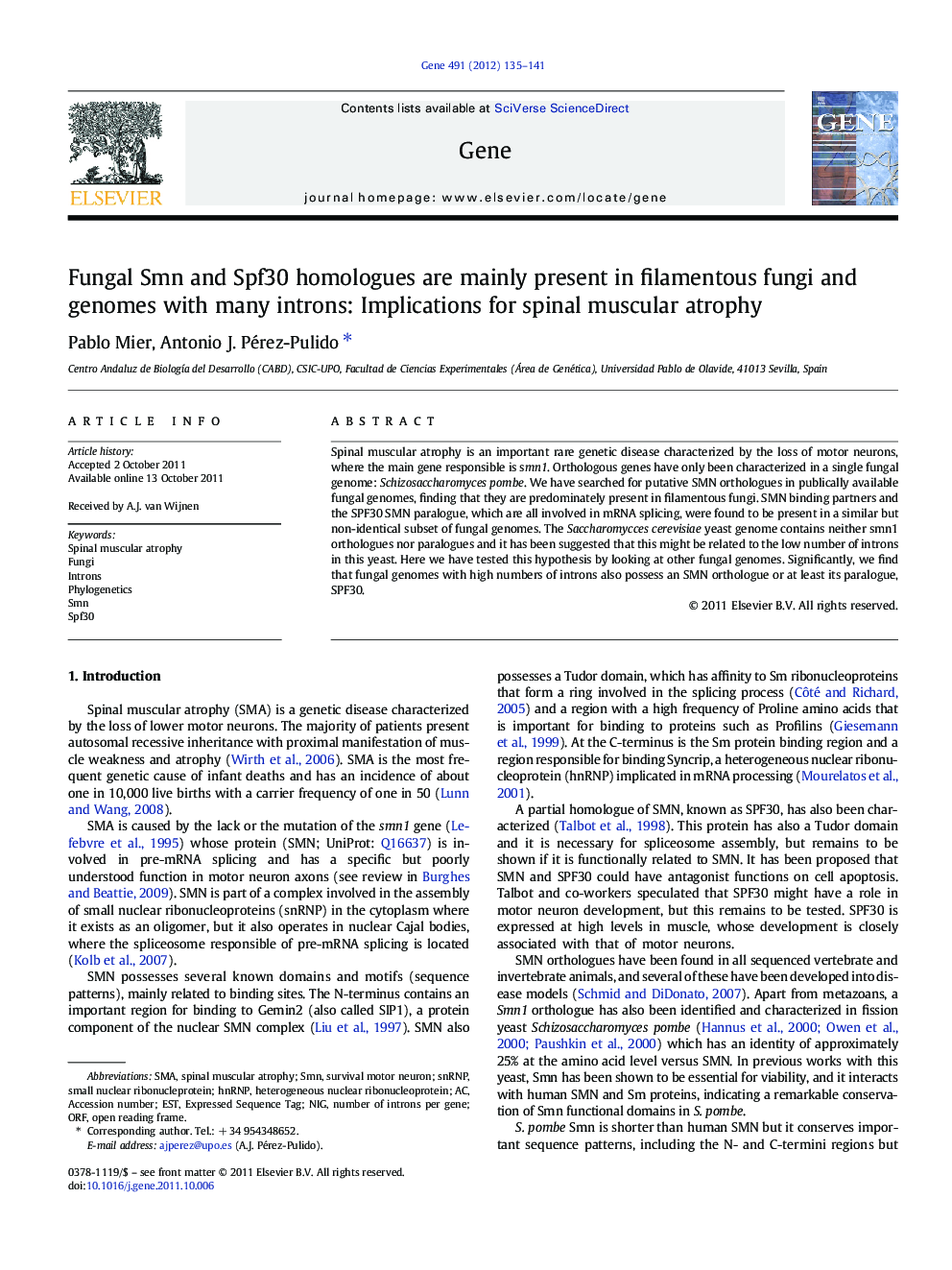| کد مقاله | کد نشریه | سال انتشار | مقاله انگلیسی | نسخه تمام متن |
|---|---|---|---|---|
| 2818189 | 1160035 | 2012 | 7 صفحه PDF | دانلود رایگان |

Spinal muscular atrophy is an important rare genetic disease characterized by the loss of motor neurons, where the main gene responsible is smn1. Orthologous genes have only been characterized in a single fungal genome: Schizosaccharomyces pombe. We have searched for putative SMN orthologues in publically available fungal genomes, finding that they are predominately present in filamentous fungi. SMN binding partners and the SPF30 SMN paralogue, which are all involved in mRNA splicing, were found to be present in a similar but non-identical subset of fungal genomes. The Saccharomycces cerevisiae yeast genome contains neither smn1 orthologues nor paralogues and it has been suggested that this might be related to the low number of introns in this yeast. Here we have tested this hypothesis by looking at other fungal genomes. Significantly, we find that fungal genomes with high numbers of introns also possess an SMN orthologue or at least its paralogue, SPF30.
► Fungal genomes with many introns possess Smn or its paralogue Spf30.
► Filamentous ascomycetes have both many introns and Smn.
► Filamentous fungi may represent models for the study of neurodegenerative diseases.
► S. pombe and Y. lipolytica are the only yeasts that possess Smn.
► With the exception of S. pombe, Sip1 is only present in fungi that do not possess Smn.
Journal: Gene - Volume 491, Issue 2, 10 January 2012, Pages 135–141